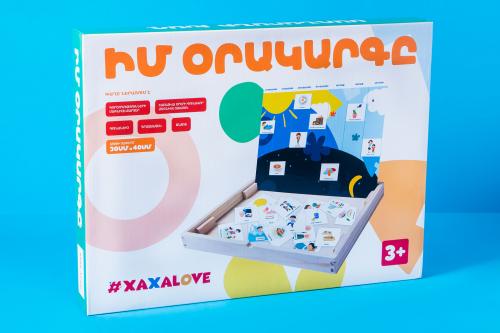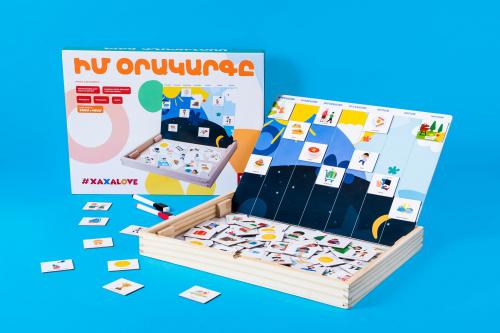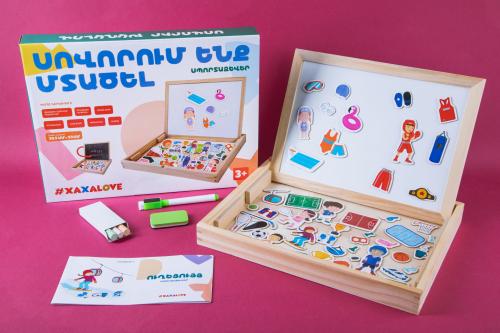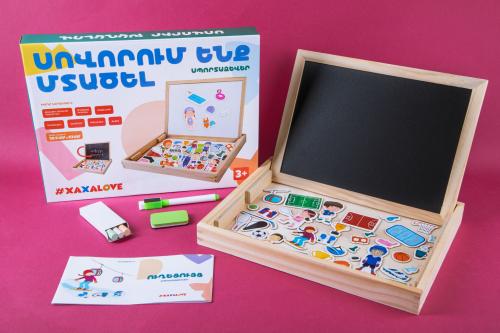Alternative versions of the game.
This game can develop the child's memory, sense of rhythm, imagination, stimulate the work of the 2 hemispheres of the brain, eye-hand-coordination, etc.
Using the individual components of this game, under the supervision of an adult, a 2-year-old child can be taught colors, as well as shades: dark and light, build a tower together, etc.
Ask the child to choose a colored ring, then look for and list objects of the same color around.
With red, green and yellow rings, you can teach the child the colors of traffic lights and play conditional games together. For example, when your teammate says green, you have to press the bell 3 times, when he says red, don't press the bell, and when he says yellow, press it once.
According to the age of the child, separate 6 or 3 colored rings and ask them to press the bell if you put one of those rings on the table, and to clap if it is another ring.
Take one of the cards and, without showing the child, according to the card, tell him to arrange in the template what he hears, for example, place the green ring in the top row from the left, etc. This task is suitable for children over the age of 4 who already distinguish between right and left.
Fill the two molds with the same molds, in the same position, then ask the child to move 3 molds without looking, after that ask him to find the differences between the 2 molds.
Arrange, for example, a 4-figure or 4-color tile in any part or different parts of the template, ask the child to look at it for a few seconds, then reproduce it on the other template without looking at the pattern.
With the smaller ones, you can get different images with the rings, for example, a caterpillar, a flower, a sun, etc.
Press the bell button with different rhythms and ask the child to reproduce.
Older children can play the classic game with both hands at the same time, or a child who is right-handed can play only with the left, and a child who is left-handed can only play with the right.
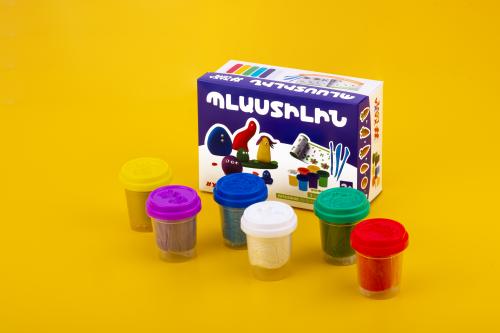
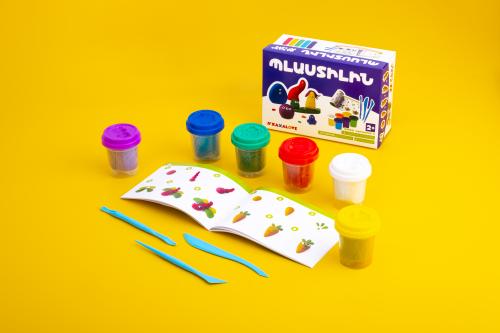
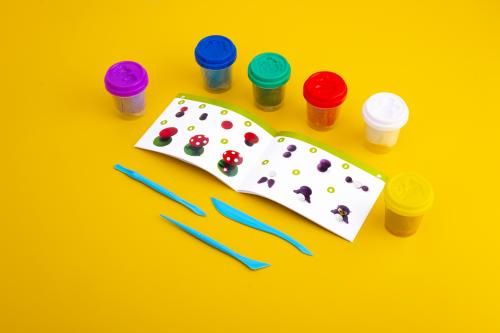
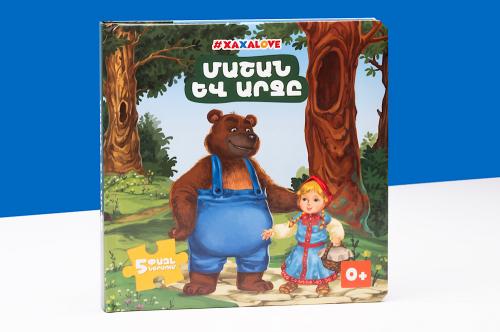
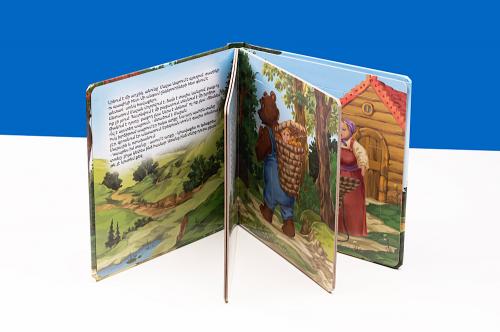
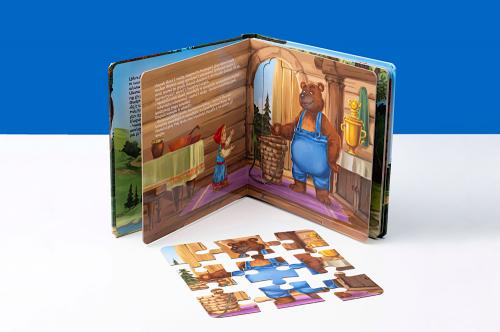
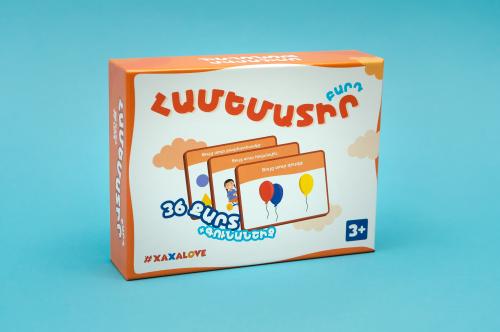
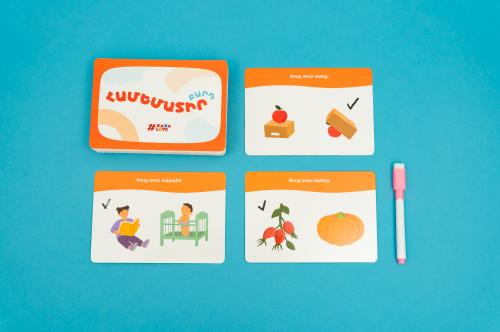
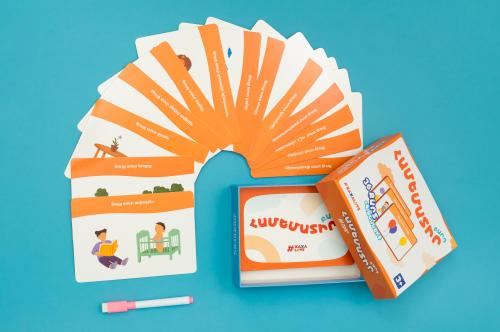
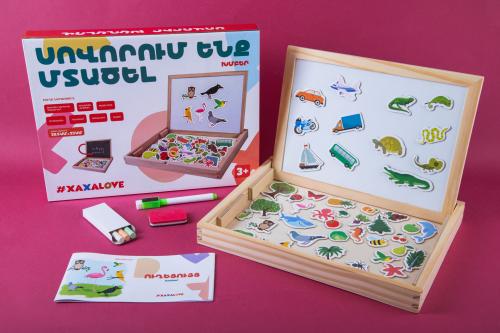
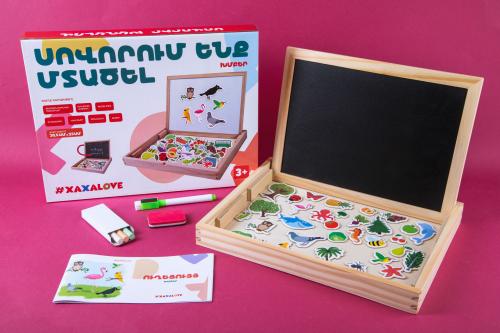
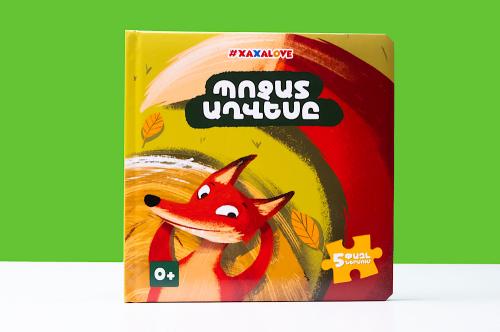
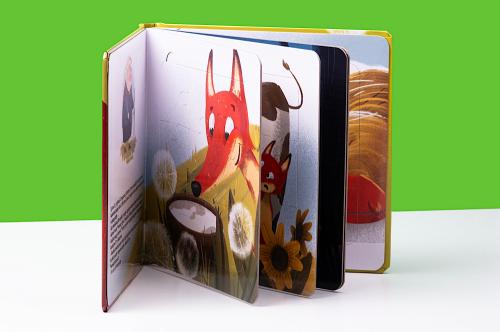
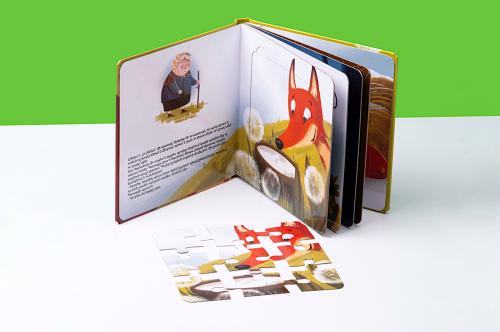
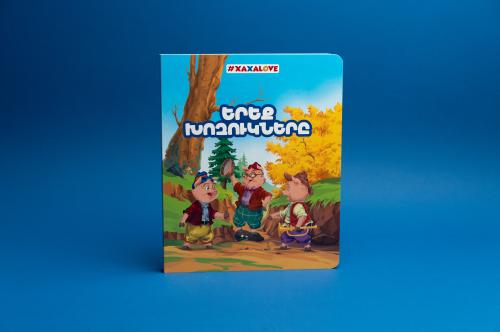
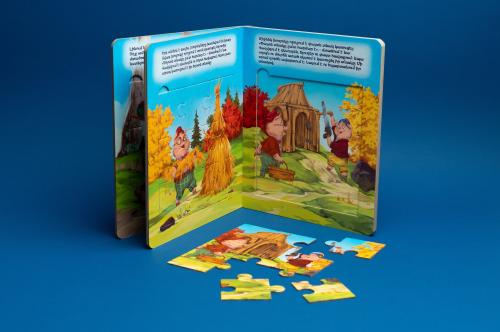

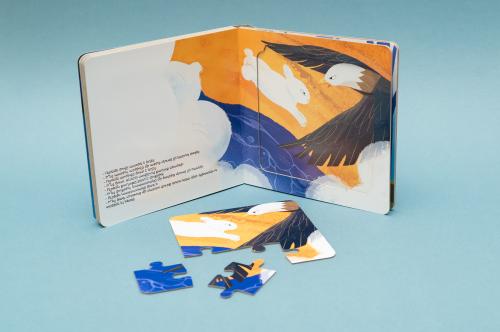
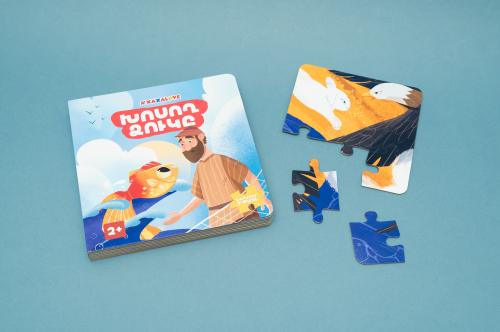
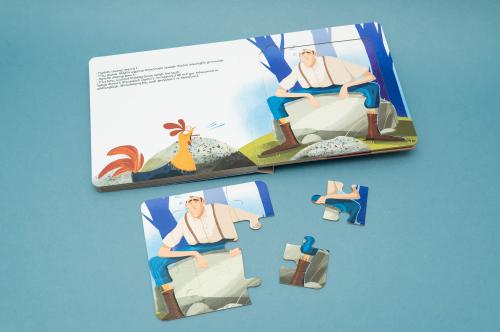
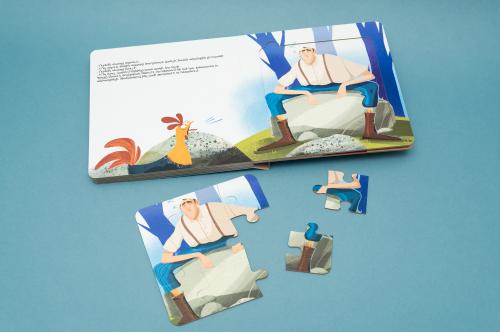
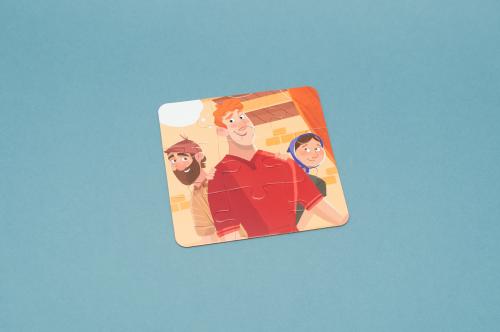
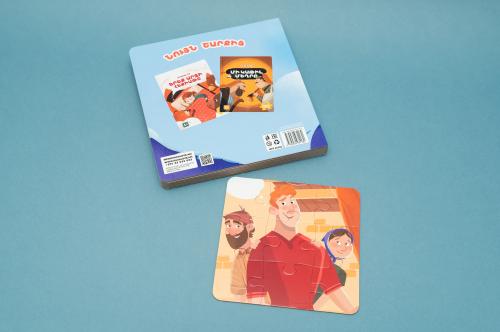
.jpg)



